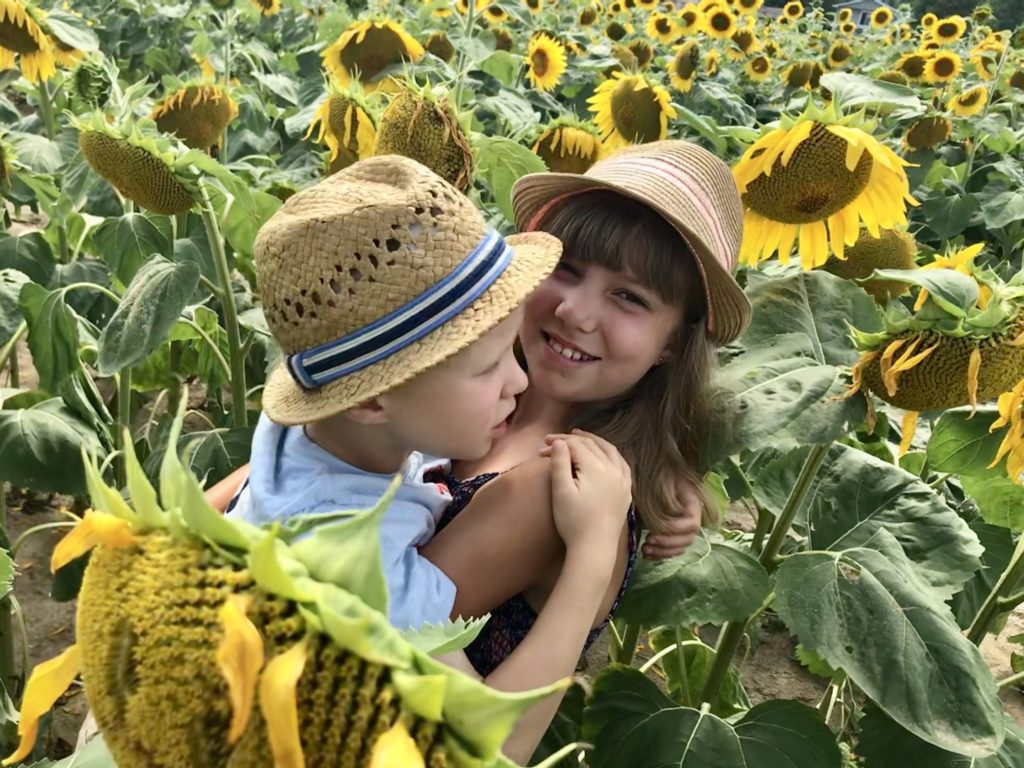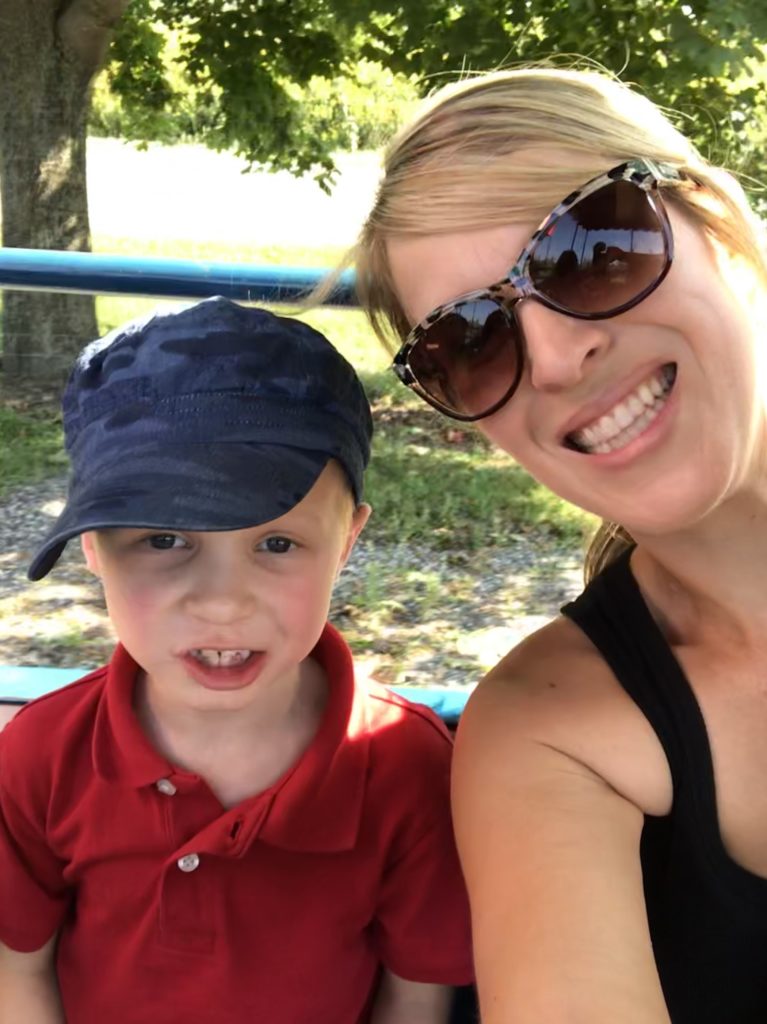World Cord Blood Day, on November 17th, is designed to expand cord blood banking awareness globally.1 To mark the day, we’re sharing an uplifting story about Annette, her son Blake, and their journey to use cord blood as treatment for Blake’s autism spectrum disorder (ASD).
- Autism spectrum disorder (ASD) is a neuro-developmental disorder that includes impairments in communication skills and social interactions, and restricted and repetitive behaviours. ASD impacts 1 in 66 Canadian children2
- Children like Blake with autism, who have their own or a sibling’s cord blood stored, may be eligible to receive a cord blood infusion as a potential treatment. This option is at Duke University under the expanded access program, approved by the US Food and Drug Administration (FDA)3
- Over 500 children with autism have participated in Duke’s expanded access program4
- Annette, Blake’s mom, reports that following his cord blood infusion, Blake’s quality of life was greatly improved. “He suddenly seemed to understand more of what we were saying. His school teacher felt like he was more interested in his peers, and was being more attentive.”
- 9 months after his infusion, Blake attends Grade 2 full-time. Annette couldn’t be more proud.
Cord Blood Awareness – “Hearing what was possible”
Annette McLean is an experienced Registered Nurse in London, Ontario. Midway through her first pregnancy, a colleague raised the possibility of umbilical cord blood stem cell banking.
Annette recalled, “She’s telling me about cord blood and using the stem cells and saying, ‘it’s amazing the science behind this’”. Annette’s colleague was adamant: “If I was pregnant today, boy would I be looking into that. You just never know what it could be helpful for in the future.”
The Decision to Store Cord Blood – “The information that struck a chord”
Annette and her husband did their research and decided to store their first baby’s umbilical cord blood, viewing it as a type of insurance. “We actually banked cord blood for both our children. For Caitlin, who I was pregnant with at the time of the conversation with my nursing colleague, and then again for Blake. Afterwards, we just kind of set that aside and carried on with life. You don’t think about using it.”
That was until Blake was turned one and a few anomalies emerged in his development.
Diagnosis – “I started noticing that Blake wasn’t developing properly. He was just kind of in his own little world.”
Blake didn’t respond to voices, and struggled with eye contact. “I could tell he wasn’t following what I was saying” Annette reflected. “I’d be two feet away saying his name and he wouldn’t look at me.”
That Blake could be autistic didn’t cross Annette’s mind at the time. “I was worried he had an auditory processing disorder.” He wasn’t exhibiting the typical symptoms associated with autism.
The family saw experts to assess Blake, and he soon began speech and language therapy. After a lengthy process, when he was three-and-a half, Blake was diagnosed with autism. For a few years after his diagnosis, Annette explored different therapy options for Blake.
Then Annette received an email from Cells for Life.
The Opportunity – “What are the odds that we have a child with autism and we banked our children’s cord blood? It was meant to be. This has to be Blake’s story.”
Annette remembered, “We were just dealing with Blake and life. Then one day I opened my email and there was the cord blood newsletter. The headline said there was a cord blood program aiming to assist in the treatment of autism.”
The program Annette read about in the newsletter is the expanded access protocol at Duke University Medical Centre in North Carolina.5 In October 2017, the FDA approved this program allowing families to access sibling or autologous (a child’s own) cord blood infusions for children with various brain conditions, including autism.
“I started hysterically bawling,” Annette shared. She immediately reached out to both Cells for Life and Duke University for more information.
Blake was added to Duke’s waitlist, due to the worldwide demand for inclusion in the program. A year later, and with the required analysis of Blake’s stored cord blood sample completed successfully, Blake was admitted to the program and his cord blood released to Duke for infusion.
Blake’s Improvements – “Without a doubt, he understands so much more than he did. I do feel like I’m connecting with him now.”
In November 2019, the family travelled to North Carolina. At the age of six, Blake was infused with his own cord blood. “Everything happened on schedule. It was a positive experience.” Annette said.
The family left Duke cautiously optimistic about Blake’s infusion. He continued therapy once he returned home to Canada. In late February, Blake’s schoolteachers started noticing changes. Annette shared, “His teacher felt like he was more interested in his peers and was being more attentive.” But when COVID restrictions were imposed in March, Blake’s in-person therapy, and schooling, were halted.
In the months following however, despite his lack of therapy, Annette continued to see improvements in Blake’s communication. “He suddenly seemed to understand more of what we were saying.”
While Annette is mindful that Blake’s advances might be related to his natural progression, the definitive positive changes in Blake were apparent to her and to others.
This September, nine months after his cord blood infusion, Blake achieved a significant milestone, by attending grade two full-time. Annette could not be prouder of his achievements, “He’s doing really well,” she beamed.
A final word from Annette on Blake’s life-time opportunity
When asked whether she would encourage other expectant parents to consider storing their child’s cord blood, Annette insisted, “It’s definitely something to take into consideration. It is a bit of an investment, but you need to look at it over the long run and how it might impact your child’s life!”
A recent study showed 93% of expectant mothers want to be educated about cord blood banking during their pregnancy.6 World Cord Blood Day is just one of the ongoing efforts to increase cord blood awareness worldwide. To receive more information regarding cord blood storage options, request your free cord blood information kit.
1 https://www.worldcordbloodday.org/
2 https://www.canada.ca/en/public-health/services/publications/diseases-conditions/autism-spectrum-disorder-children-youth-canada-2018.html
3 https://clinicaltrials.gov/ct2/show/NCT03327467?term=Duke+cord+blood&cond=ASD&draw=2&rank=3
4 McLaughlin et al (2019) Stem Cell Transl Med
5 https://clinicaltrials.gov/ct2/show/NCT03327467?term=Duke+cord+blood&cond=ASD&draw=2&rank=3
6 University of Sydney Survey



